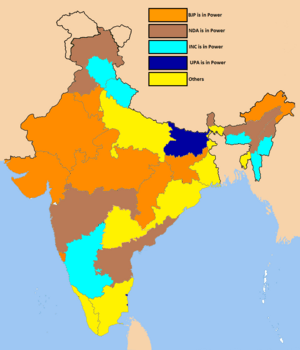Multi-party system facts for kids
A multi-party system is a type of government where many different political parties can run for election. In this system, several parties have a good chance of winning government jobs. They can even work together to form a coalition government. This means different parties join forces to lead the country.
This system is often found in countries with a parliamentary system of government. It is also very common in places that use proportional representation for elections. This voting method helps smaller parties get a fair share of seats. In contrast, countries using "first-past-the-post" voting often have fewer parties.
Contents
What is a Multi-Party System?
In a multi-party system, many political parties compete for power. Each party usually has different ideas about how to run the country. Voters can choose from a wide range of options. This allows more people to find a party that matches their views.
When no single party wins enough votes to form a government alone, they often create a coalition government. This is like a team-up where two or more parties agree to work together. They share power and make decisions as a group. This helps ensure the government has enough support to pass laws.
How Elections Work
There are different ways countries hold elections. These methods can affect how many parties succeed.
Proportional Representation
Many multi-party systems use proportional representation. This voting method tries to give parties seats in the legislature (the law-making body) that match the percentage of votes they received. For example, if a party gets 20% of the votes, it might get about 20% of the seats. This makes it easier for smaller parties to win seats.
In some proportional systems, voters choose from lists of candidates. In others, several representatives are elected from one large area. This helps ensure that many different viewpoints are represented in the government.
First-Past-the-Post
The "first-past-the-post" system is different. In this method, the candidate with the most votes in each area wins. Even if they don't get more than half the votes, they still win. This system often favors larger parties. It can make it harder for smaller parties to win seats, even if they have support across the country.
Countries with Multi-Party Systems
Many countries around the world use a multi-party system. Some good examples include:
- Brazil
- Denmark
- Finland
- Germany
- India
- Indonesia
- Ireland
- Israel
- Italy
- The Netherlands
- New Zealand
- Norway
- South Africa
- Spain
- Sweden
In these countries, it's common for governments to be formed by coalitions. This shows how different parties can work together for the good of the country.
See also
 In Spanish: Sistema multipartidista para niños
In Spanish: Sistema multipartidista para niños


